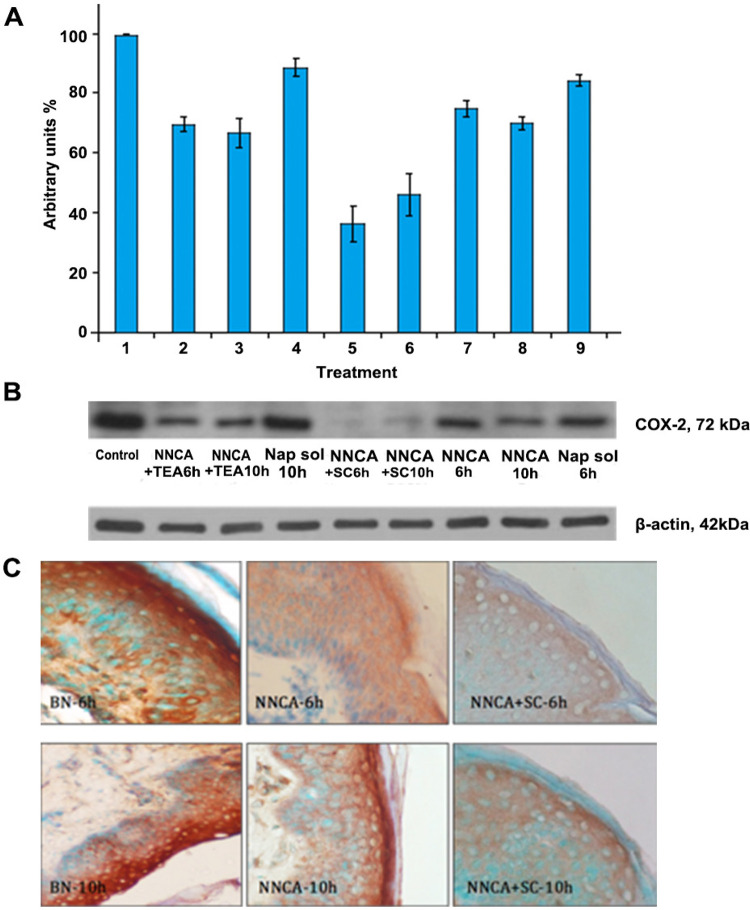Figure 7.
Effects of topically applied naproxen-loaded thermorespnsive nanogels on porcine skin, ex vivo. A. Representative Western blots for COX-2 expression following the dosing of porcine skin with naproxen-loaded PNIPAM nanogels after 6 and 10 h, relative to water control. β-actin was used as the housekeeping protein. The upper blots show COX-2 for each treatment where the intensity of the bands and is directly proportional to protein level. The lower blots show the β-actin control (n = 3 ± SD). Key: 1. control (untreated), 2. NNCA + TEA (naproxen nanogel + citric acid + triethylamine) at 6 h, 3. NNCA + TEA (naproxen nanogel + citric acid + triethylamine) at 10 h, 4. Naproxen solution at 10 h, 5. NNCA (naproxen nanogel + citric acid + sodium carbonate) at 6 h, 6. NNCA (naproxen nanogel + citric acid + sodium carbonate) at 10 h, 7. NNCA + SC (naproxen nanogel + sodium carbonate) at 6 h, 8. NNCA + SC (naproxen nanogel + sodium carbonate) at 10 h, 9. naproxen solution at 6 h. Note: significant anti-inflammatory active of naproxen-loaded nanogels, in particular from those involving the addition of sodium carbonate (one way ANOVA followed by Dunnett’s post hoc analysis). B. Western blots for COX-2 in ex vivo porcine skin. C. Representative immunostaining images for COX-2 in ex vivo porcine skin dosed with PNIPAM nanogels. Ex vivo porcine skin treated with: BN (blank nanogel) after 6 h (top left), BN (blank nanogel) after 10 h (bottom left), NNCA (naproxen nanogel + citric acid) after 6 h (top center), NNCA (naproxen nanogel with citric acid) after 10 h (bottom center), NNCA + SC (naproxen nanogel with citric acid, then sodium carbonate) after 6 h (top right), NNCA + SC (naproxen nanogel with citric acid, then sodium carbonate) after 10 h (bottom right). Note: high staining (high COX-2) in the blanks, lower staining (lower COX-2) when naproxen nanogel applied, much lower staining (much lower COX-2) following the application of sodium carbonate causing the greater release of naproxen in situ.

